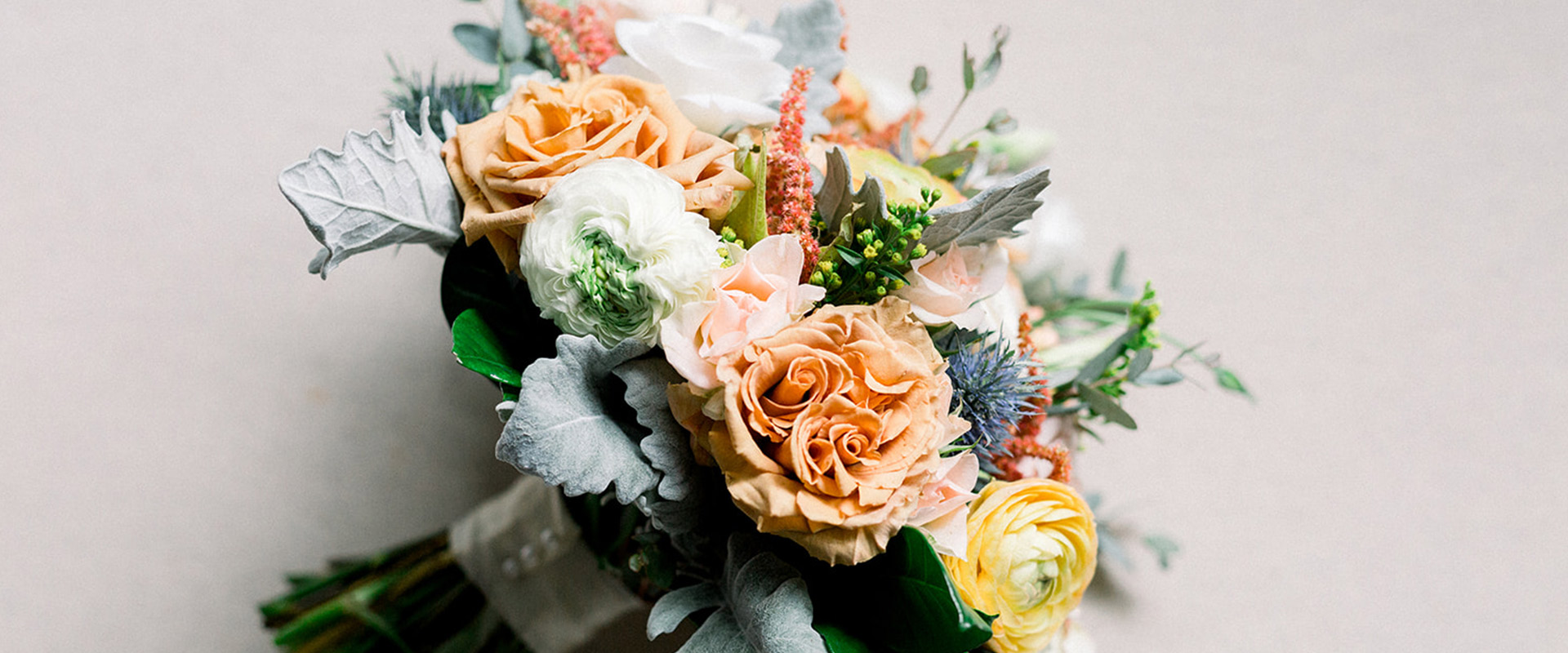
Did you know that June is National Rose Month? While we celebrate roses year round, we thought National Rose Month was the perfect time to share more about these beauties. First, we explore the history of roses. Then, we take a closer look at four different categories of roses that we see in the cut flower industry.
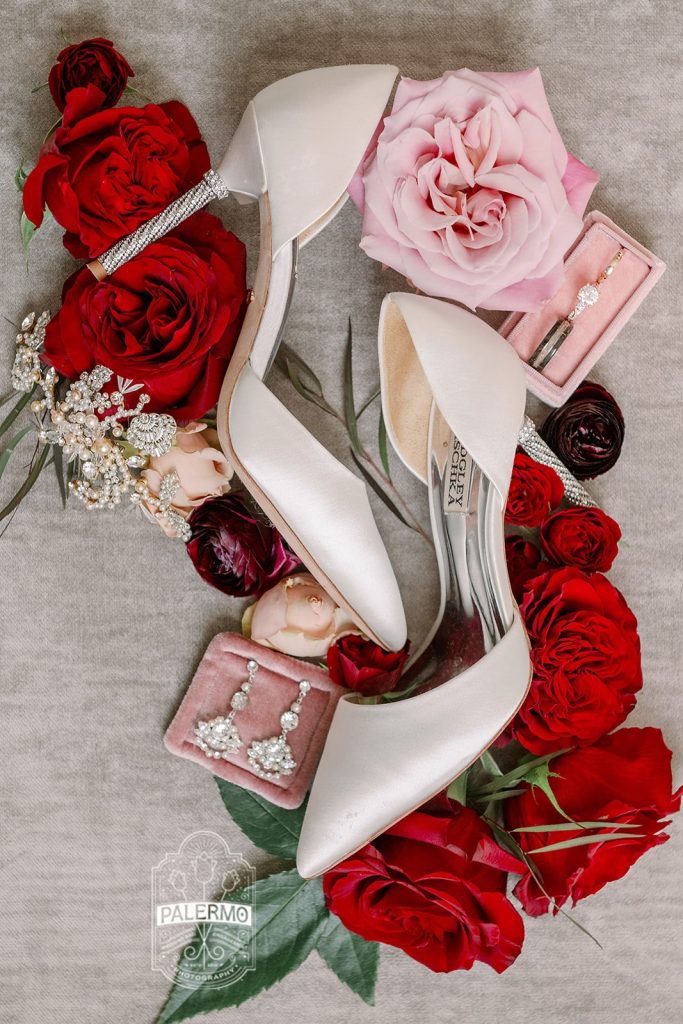
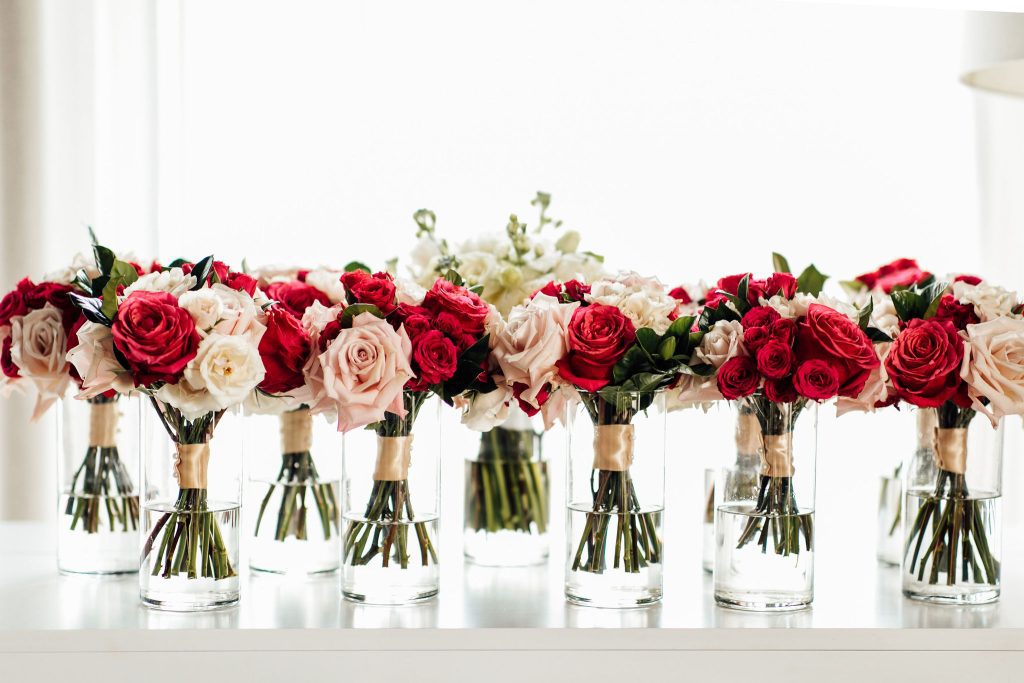
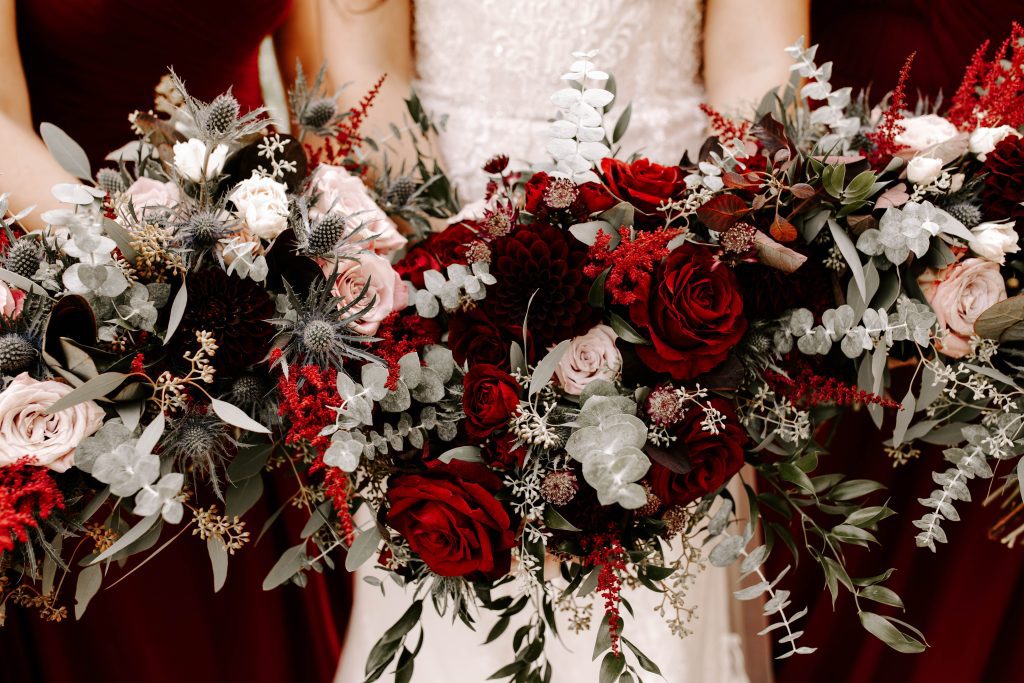
Roses, perhaps more than any other flower, hold a special place in the varied catalogue of human history. Partly because they grow naturally in virtually every climate on the planet, with the exception of the truly tropical. Despite their many variations, they all remain instantly recognizable as uniquely beautiful. They were prized and cultivated in the Ancient World by the Greeks, Persians, Egyptians, and Romans – famously perfuming Cleopatra’s barge when poor Mark Anthony became hopelessly besotted.
In England, one of the oldest and most lushly perfumed shrub varieties -the Gallicas (otherwise known as the Apothecary’s rose) – gained historical prominence during the English Civil War as the Red Rose of Lancaster and it’s close relation – Rosa Alba – became the banner of the opposing forces of the House of York. The bloody conflict that ensued was known forever afterwards as the War of the Roses. Further North, the Centifolias group of roses – affectionately nicknamed “Cabbage roses” for their uniform, abundant petals and symmetrically even rounded flower – were considered so perfectly formed, they were immortalized in the famous still life paintings of the Dutch Masters. In the 18th century, native varieties of repeat flowering roses were smuggled out of China and into Europe during the Opium Wars, transforming the entire future of rose production.
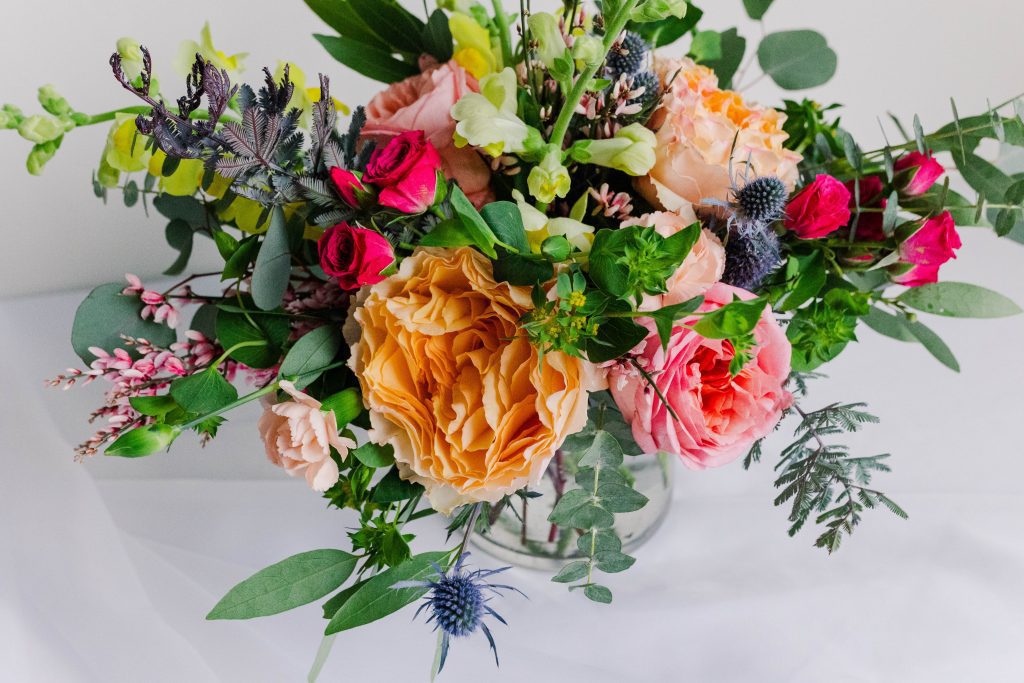
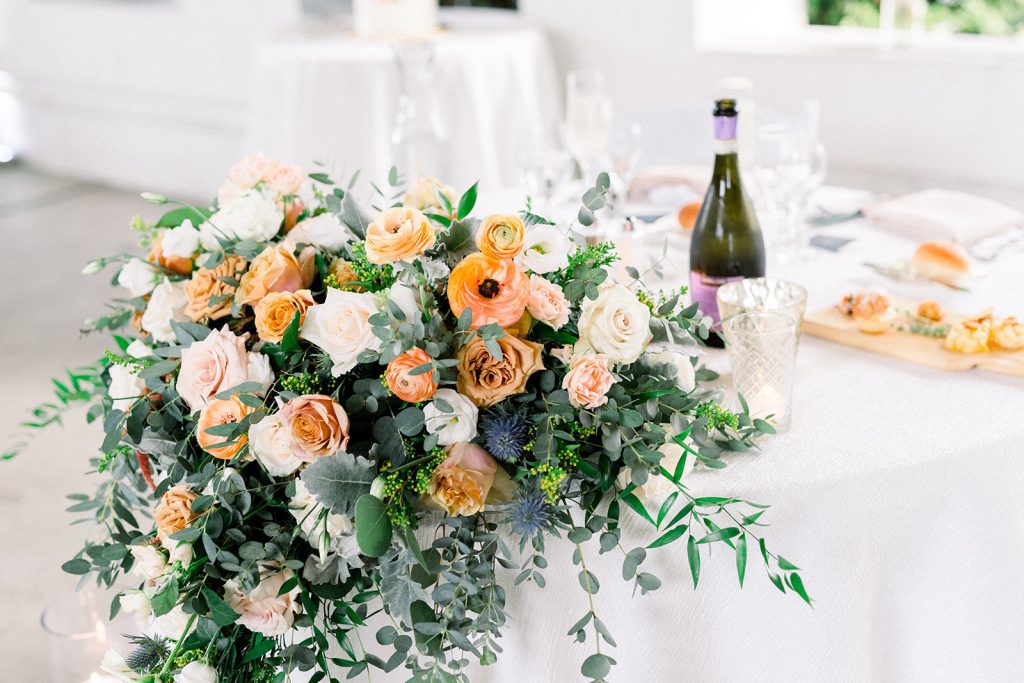
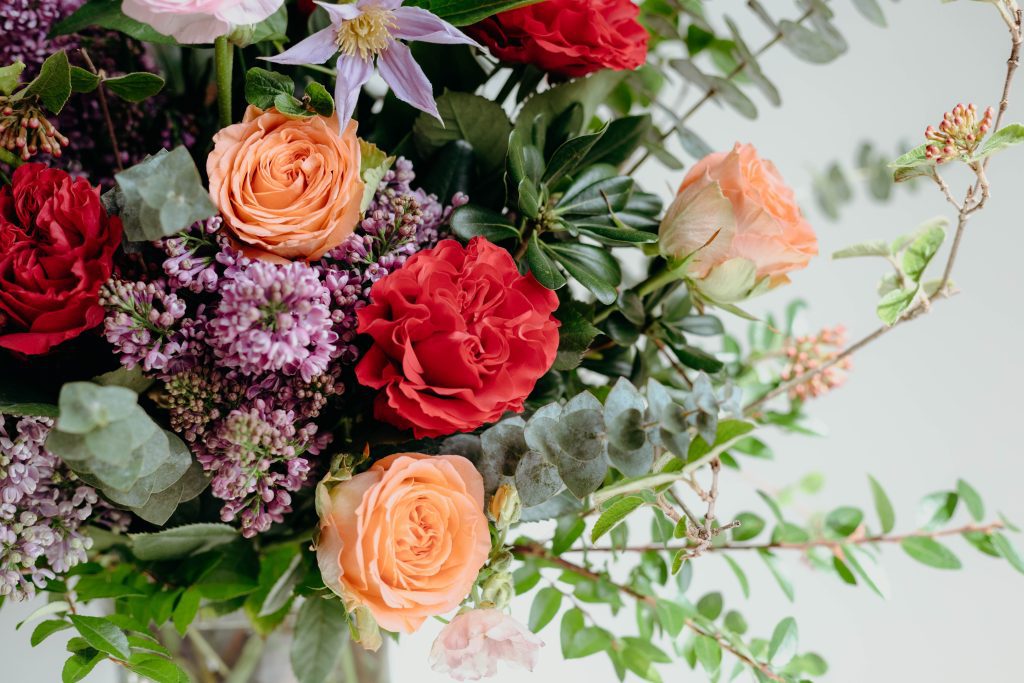
Today, roses have evolved to become the backbone of the entire floral industry. They are one flower that can be consistently bred in different sizes, shapes, in a vast array of colors. They can be relied upon to perform consistently well in a variety of circumstances and maintain a substantial vase life. Since their mass introduction into the commercial floral industry in the early 1900’s, standard roses quickly surpassed carnations and lilies to become the most popular focal flower choice of professional florists worldwide.
Although there are thousands of diverse species, groups, and varieties recognized in the horticultural world, most of them don’t meet the rigorous standards of the commercial floral industry. The reasons vary, but ultimately they’re not sturdy enough to be transported, are extremely susceptible to disease, and have a very short vase life. That doesn’t mean we can’t enjoy them – far from it. Growing a hearty hybrid variety that thrives in your climate is the best way to make these gems a regular part of your life. As for their short vase life, bud vases were invented for just this situation. A bud vase allows you the pleasure of delighting in the ephemeral life of a single bloom while enjoying its perfume at close range.
So, what can you expect if you want to buy roses from a professional florist? In commercial floristry, we divide roses into four categories (quite irrespective of varieties or horticultural categorizations). The standard rose, the spray rose, the traditional garden rose, and the less widely available sweetheart rose.
The standard rose is the true workhorse of the industry. The standard rose category is made up of a large and varied collection of hybrid tea roses. They get the name “Tea” roses because they were thought to smell like the wooden tea chests used to import aromatic fresh tea from China. These roses are cultivated for a strong, upright stem, consistent rich color, high petal count, and a long vase life. Standard roses have high centers, an abundance of velvety, slightly pointed petals, and are large enough to serve as the focus of design work. They can reach anywhere from 2 to 5 inches in diameter when open. They also come in a wide array of colors. From traditional red, pinks, oranges, and yellows to haute couture colors like cool mauve, warm burnt sienna, soft pinky beige, as well as a whole host of richly variegated varieties.
The only thing Standard roses truly lack is scent. This is because they’ve been bred so carefully in controlled greenhouses over the years to achieve all these other qualities. Which means that scent has been scarified to achieve uniformity and consistency. They range in size from 50 cm to 70 cm. With some basic care, our customers can expect at least 7-10 days of vase life from a fresh standard rose.
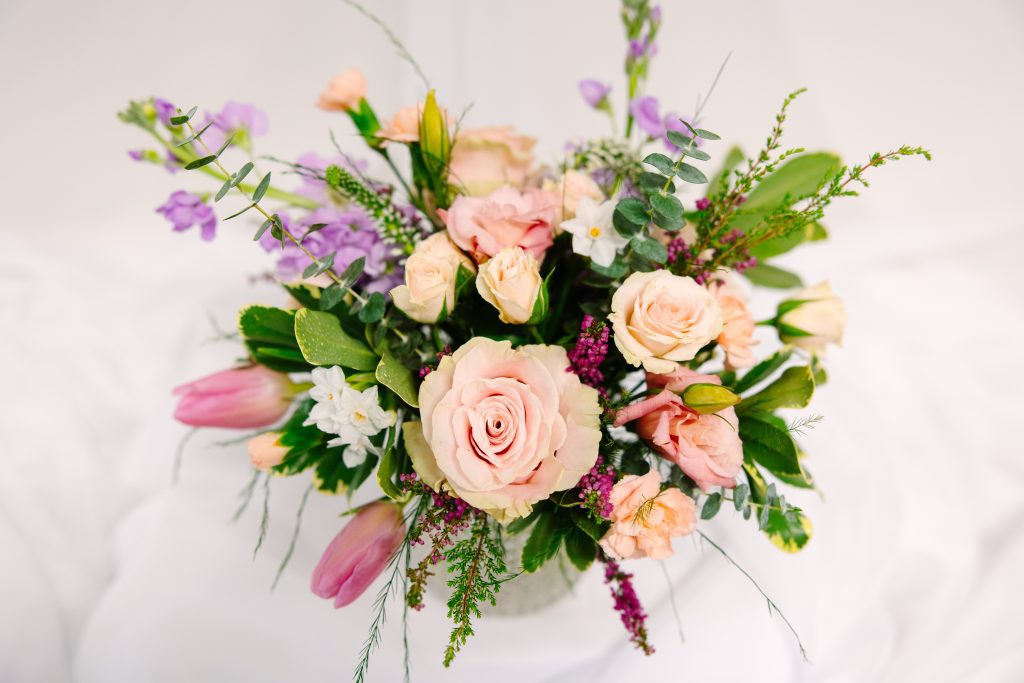
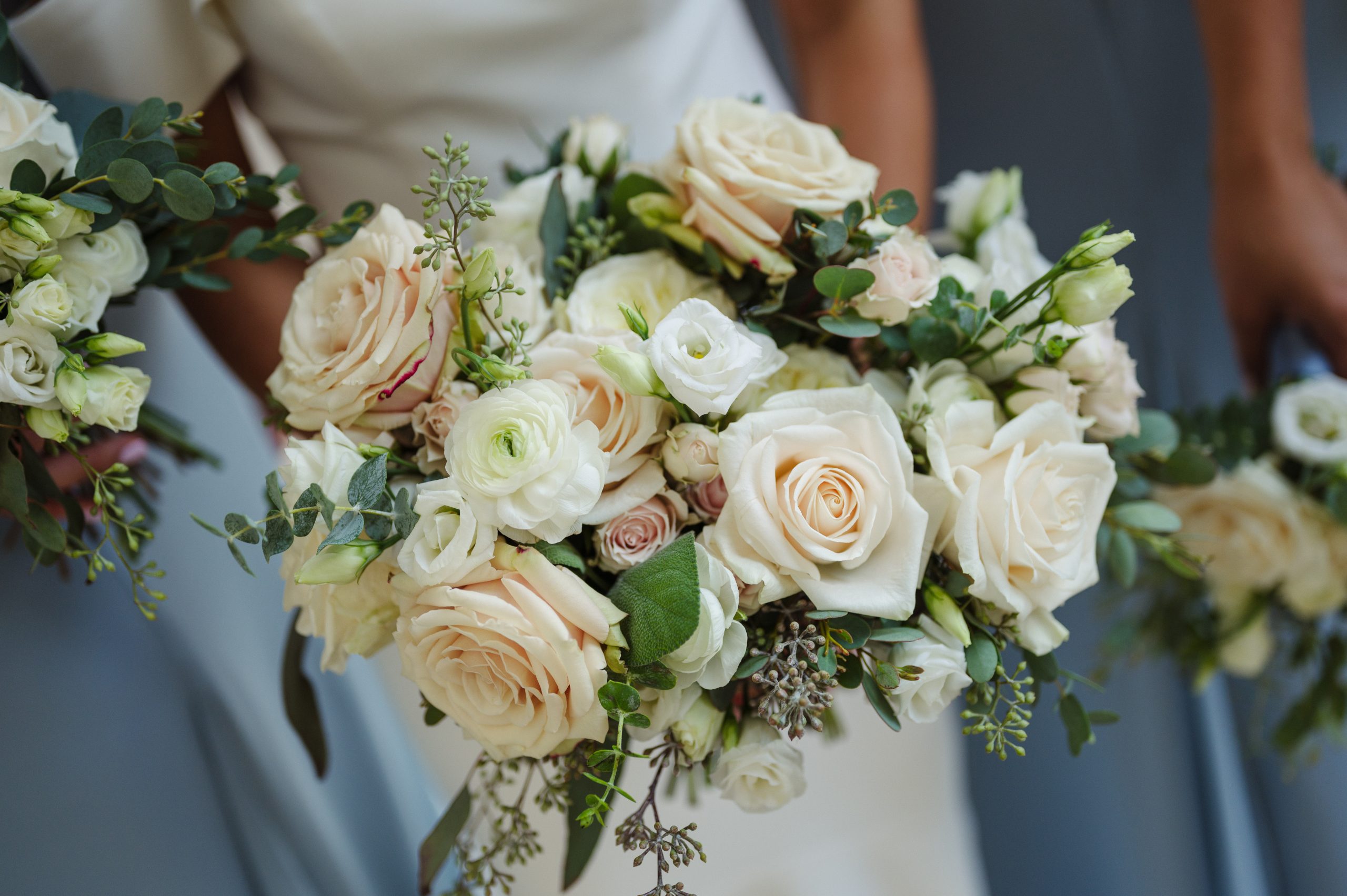
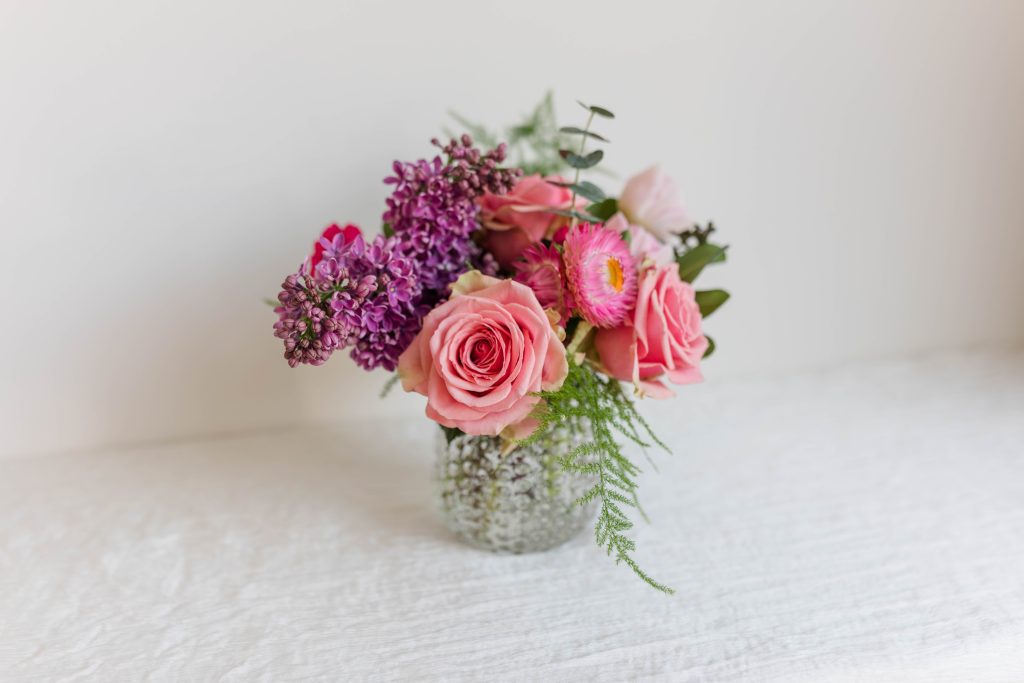
Like the standard rose, the spray rose was created specifically by the floral industry to fill a need for a smaller, multi-headed flower on a single stem. The inspiration came from the spray carnation and chrysanthemum which were already popular and readily available. In the mid 1960’s, various breeders were recruited to focus on this achieving this. Eventually succeeding in the early 1980’s when the first official spray rose varieties Porcelina and Evelien were launched.
Nowadays, its difficult to imagine a wedding arrangement or bouquet that doesn’t depend heavily on delicate sprays. They come in an ever-increasing palette of colors and textures. Varieties typically have 3 to 5 blooms per stem. They are often harvested when they are at different stages of opening so that buds and fully opened blooms appear on the same stem. They’ve become essential in the design of personal flowers – boutonnieres, wrist corsages, and flowers crowns. They are the most elegant, refined filler flower choice for larger arrangements and installations. Like the standard rose, they have no obvious scent and can last for up to 10 days in arrangements.
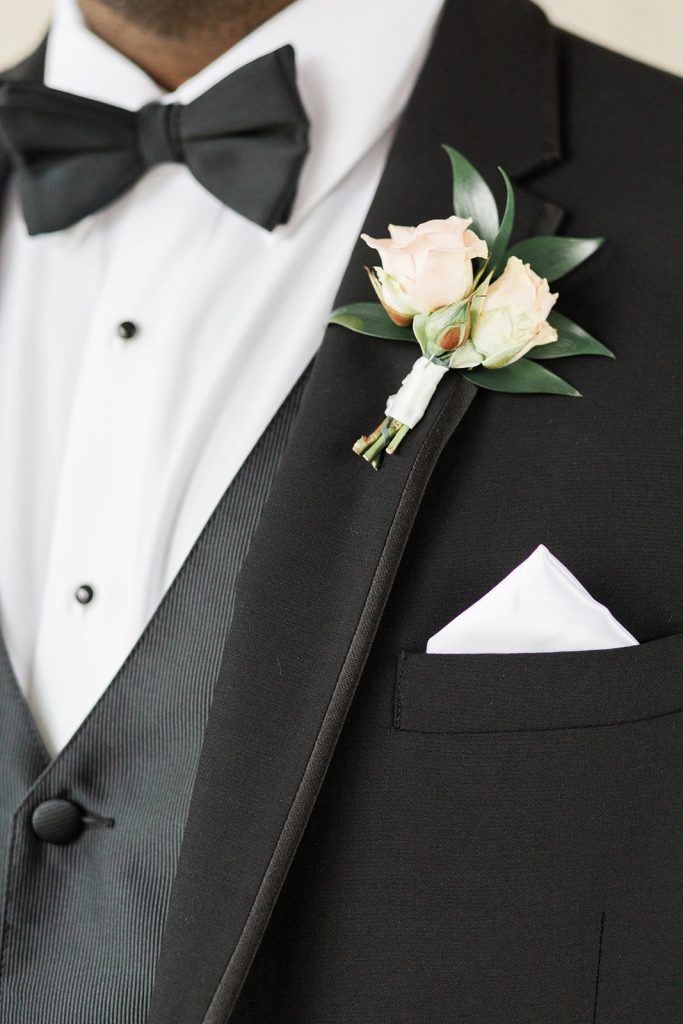
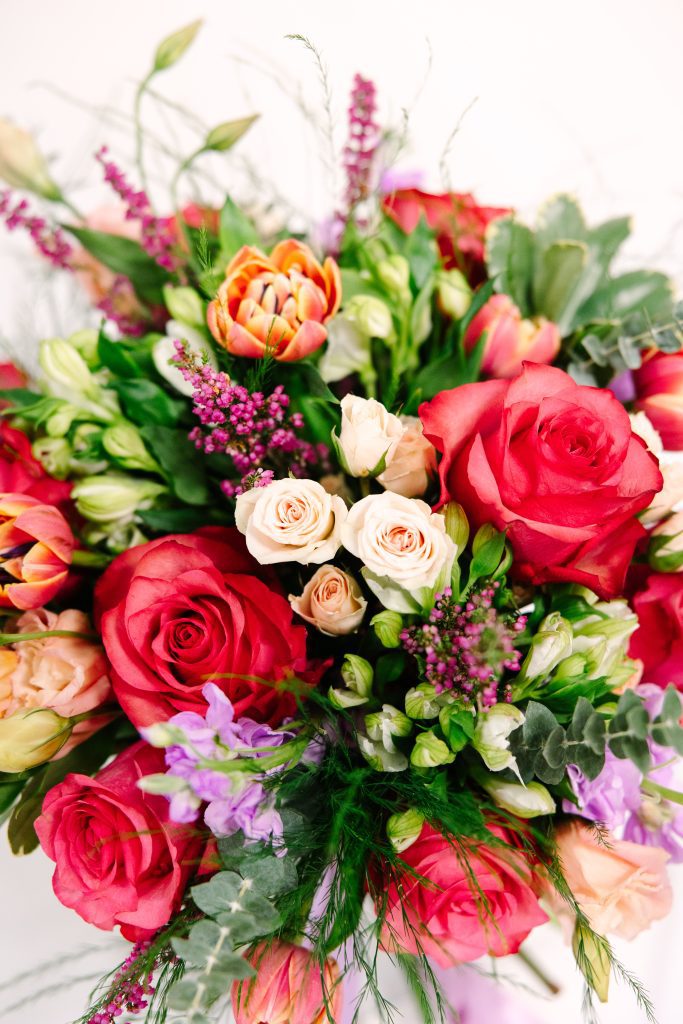
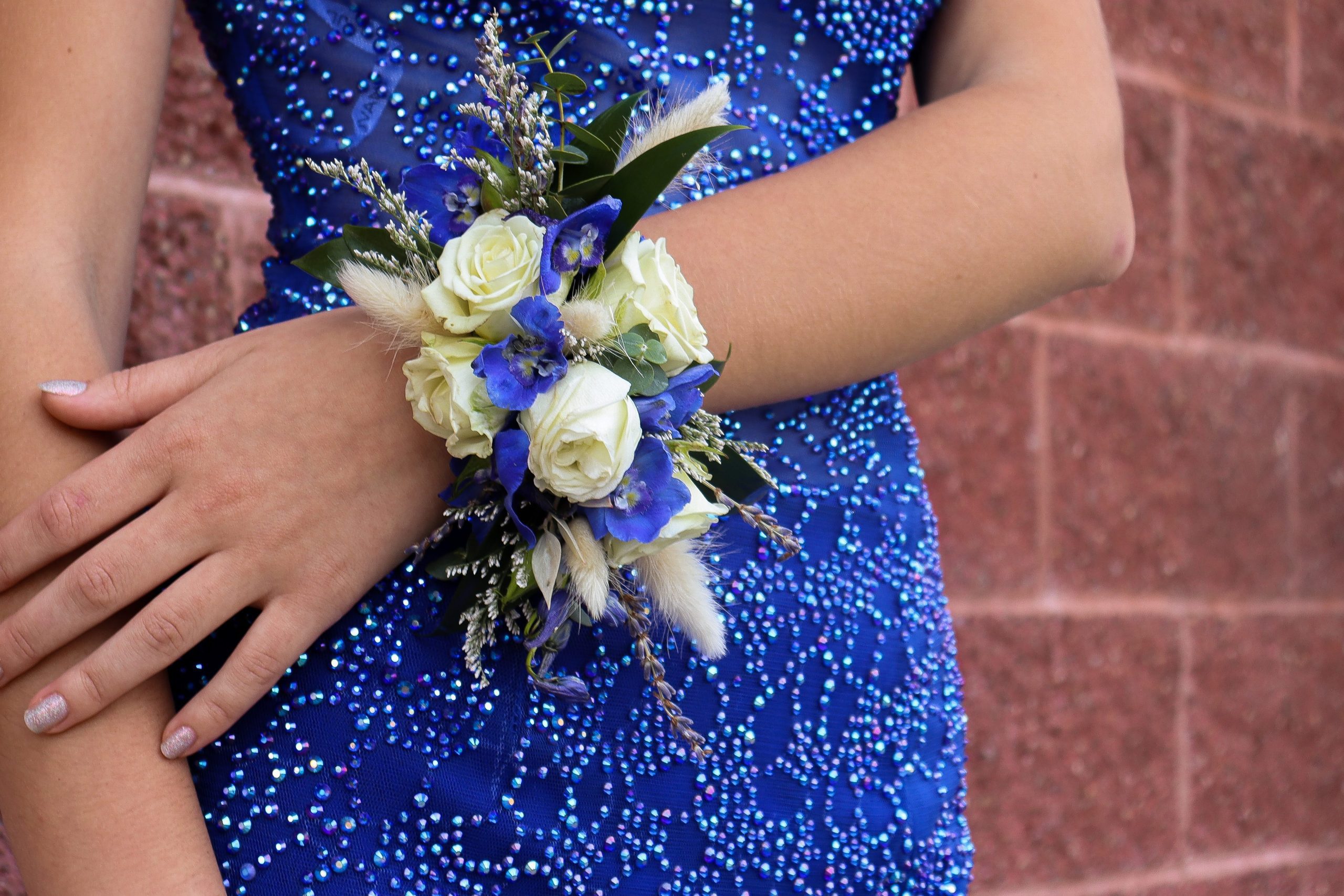
“Garden Roses” are sometimes called an Old Garden roses or Old Fashioned roses. The term “Old Garden Roses” specifically refers to varieties of roses that existed before 1867. This is when the first hybrid tea rose, “La France” was successfully introduced. These hybrid tea roses have since been dubbed “Modern Roses” and are the precursors of the floral industry’s standard rose. In turn, the parentage of the floristry grade Garden Rose comes from the careful breeding of some of the oldest known varieties of rose. These include the Alba, Gallicas, and Damasks – with “Modern” Hybrid Teas and repeat blooming Floribundas. The aim has been to produce a generous, richly perfumed rose with a very natural, open face and luxurious, ruffled texture which also has the disease resistance and ability to repeatedly flower.
Garden roses feature as many as a hundred softly rounded papery petals, spiraling to form large blooms. They can range from 3.5 to 5.5 inches in diameter when fully open. They are balanced on slender, sometimes dangerously thorny stems. While they’re sturdier than their Old World parents, they’re still considerably more fragile and short lived than their standard rose counterparts. But what they lack in vase life, they more than make up for in the sheer perfection of their romantic abundance, delicate coloring, and wide range of delicious floral fragrances. Scents range from green citrusy herbal notes, to rich musky undertones of vanilla and myrrh.
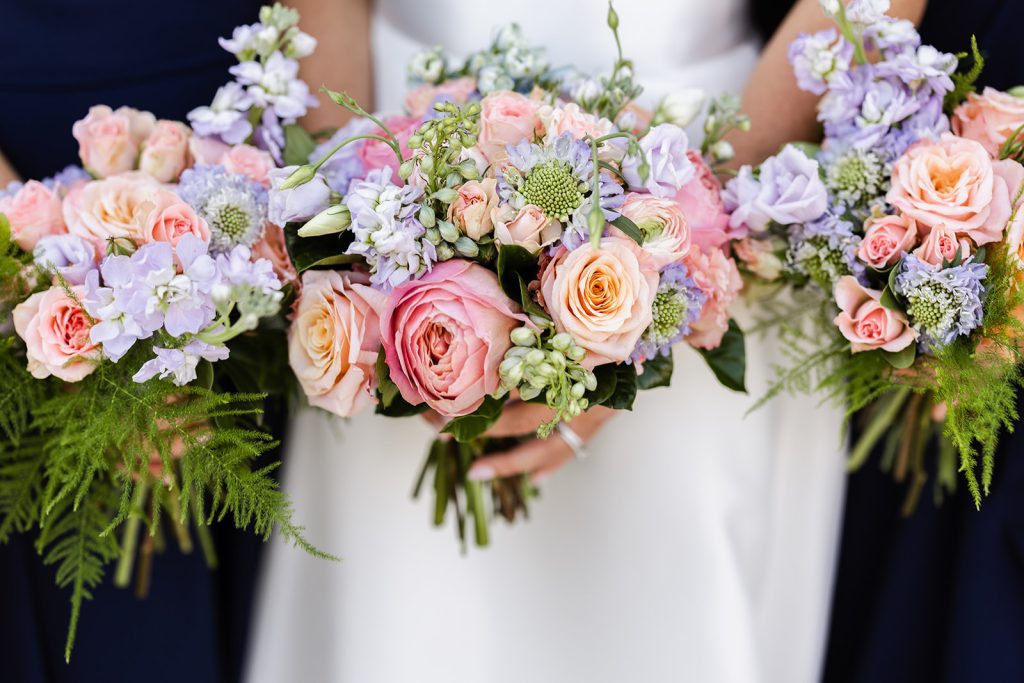
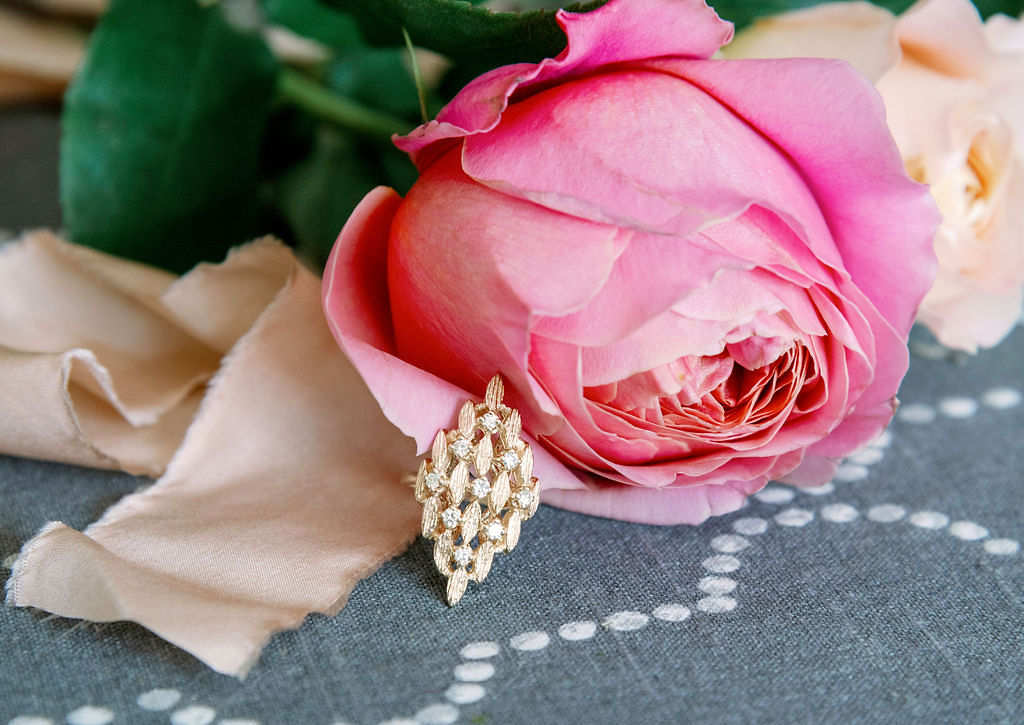
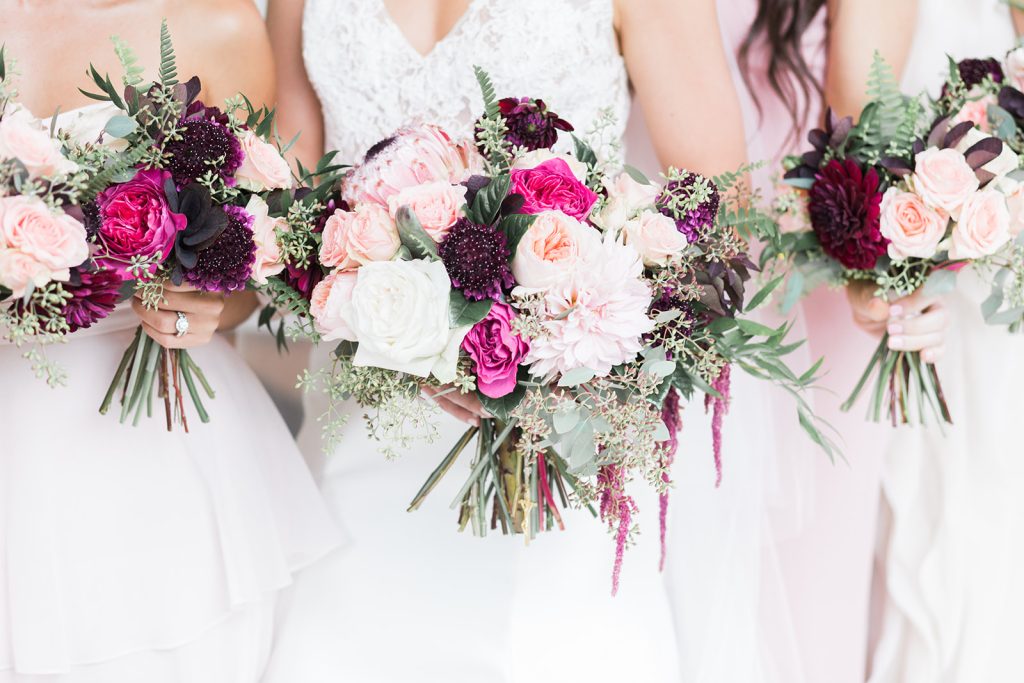
Of all the garden roses available today, David Austin English Roses are universally considered to be the gold standard. Bred by Shropshire Rosarian David Austin from the 1950’s onwards, they are highly sought after by brides and floral designers the world over – even though the company only began to offer cut flower varieties for wholesale ordering in 2000.
Garden roses are sold in smaller quantities and are regularly 2 to 3 times the price of a standard rose per stem. They are extremely delicate and open very quickly, so must be processed and conditioned as soon as they arrive and stored in a cooler of 90% humidly at just above freezing. They are the quintessential wedding rose. However, due to their price and rarity, are often only used in the bridal bouquet, where the bride can fully enjoy their scent and beauty. Once they’ve been arranged, you can expect garden roses to last on average 4-6 days.
The sweetheart rose is a miniature hybrid tea rose with a single bloom on a straight stem. Smaller than the standard rose but larger than a single spray rose blossom – usually around 40 cm or slightly less. As a specialty rose, they are less readily available than standard or spray roses. They tend to be more expensive per stem as a result. They typically open up to be between 1.5 and 2 inches in diameter and have slender, more fragile stems.
Sweethearts are ideal to bring variation to bridal bouquets or as elegant, single stem boutonnieres. Being smaller, they have fewer petals than standard roses which means they risk blowing open more quickly and shedding their petals faster. Average vase time would be 7-8 days. Floristry blog, Flirty Fleurs completed a comprehensive rose study by color that shows the differences between standard, garden, sweetheart, and spray roses. Take a look here!
David Austin | David Austin Breeding Programme | David Austin Wedding and Event Roses
Florists’ Review | Grace Rose Farm | Heirloom Roses | Peterkort Roses | Rosa Prima
The Wonderful World of Roses – Michael Marriott
Abbie Tyler Photography | House of Couture Designs | Jenna Wallace Photography | Jess Collective Co. | LAR Weddings | Laura Rembold Photography | Levana Melamed Photography | Michael Will Photographers | Palermo Photo | Rachel Wehan Photography
Written by Kathleen Tessaro for The Blue Daisy Floral Designs
Sign up here to receive updates, insider info, early access, and more!
"*" indicates required fields
412. 367. 5810 | 1105 ROCHESTER ROAD, STE 103, PITTSBURGH, PA 15237
© 2025 The Blue Daisy Floral Designs | Web Design by: Three Ring Focus